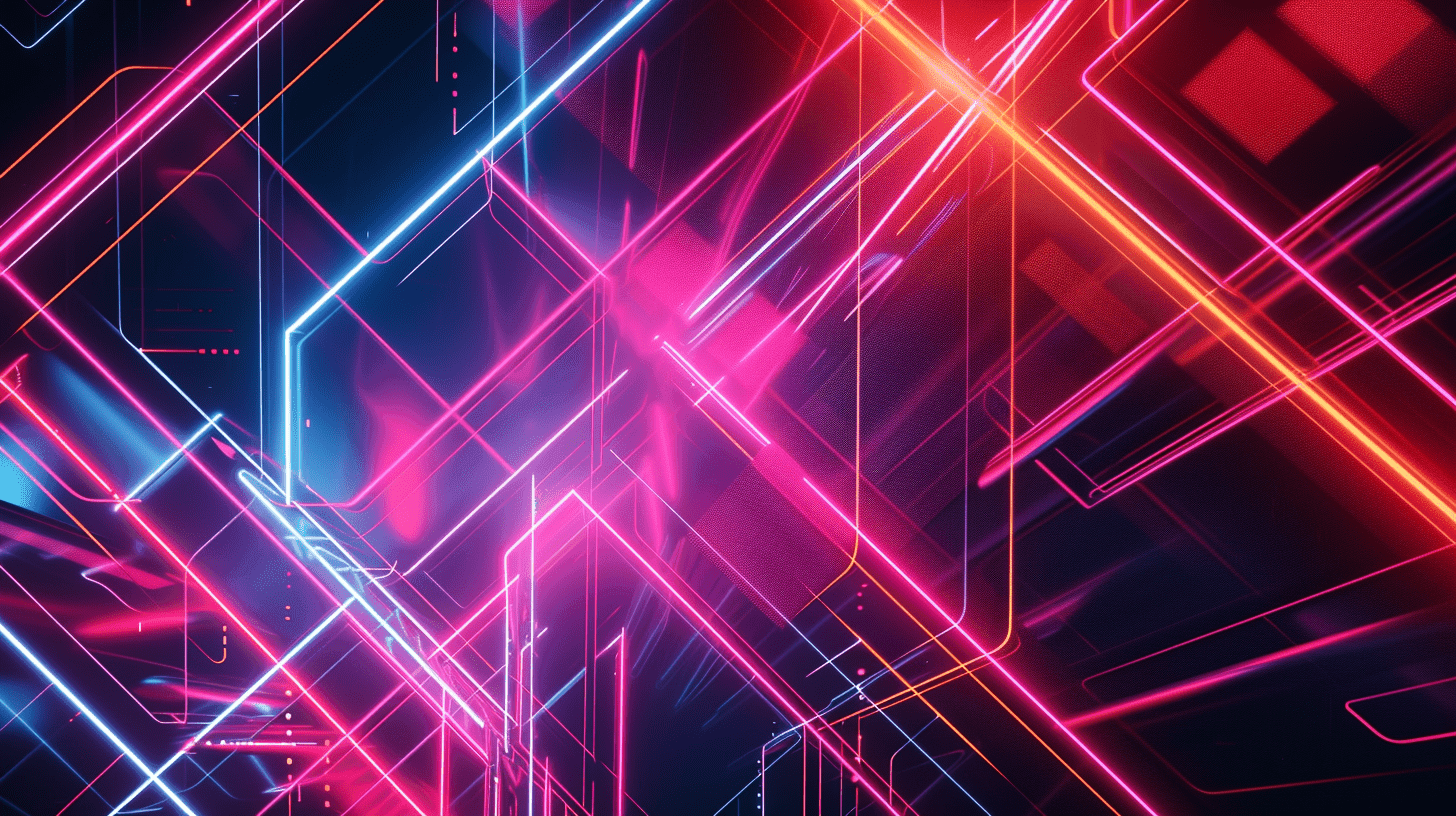Tillbaka
Digital Detox: Unplugging for Mental Clarity in 2024

Understanding Digital Overload
In an age where digital connectivity is incessantly intertwined with our daily lives, understanding the concept of digital overload becomes crucial. Digital overload refers to the stress or mental exhaustion that stems from an overuse or dependence on digital devices and online platforms. It's a phenomenon increasingly prevalent in our hyper-connected world. The constant bombardment of notifications, the endless scroll through social media feeds, and the pressure to remain digitally present at all times can lead to a range of negative effects on mental health. Symptoms of digital overload include feelings of anxiety, reduced attention spans, sleep disturbances, and a pervasive sense of being overwhelmed.
Several studies have linked excessive digital engagement with decreased cognitive performance, including poorer concentration and memory. This constant digital connection can lead to a state of continuous partial attention, where the mind is always partially engaged with digital content, preventing deep, focused thought. In this state, it becomes challenging to process information effectively or to engage in reflective thinking.
The phenomenon is not limited to adults; children and teenagers are equally, if not more, susceptible to digital overload. The rise of online schooling and the ubiquity of smartphones and tablets have exposed younger generations to prolonged screen time, affecting their developmental and social skills.
Examples of Digital Overload in Daily Life:
- Checking your phone first thing in the morning and right before sleep.
- Feeling anxious or uncomfortable when away from digital devices.
- Difficulty concentrating on a single task without checking digital devices.
The Science Behind Digital Detox
The concept of a digital detox, which entails voluntarily refraining from using digital devices for a specified period, has gained traction as an antidote to digital overload. But what exactly happens to our brain and body when we unplug from the digital world?
Neuroscientific research has shown that taking a break from digital stimuli can lead to significant improvements in mental clarity, memory retention, and overall cognitive function. When we step away from the constant influx of digital information, our brains get a chance to rest and recuperate. This respite is crucial for the consolidation of memory and for recharging the neural circuits that are overworked by incessant digital activity.
A digital detox can also have profound impacts on emotional well-being and stress levels. Studies have indicated that reducing screen time can lower levels of cortisol, a hormone associated with stress, and improve mental health outcomes. People who regularly disconnect report feeling calmer, more present, and more engaged with their physical surroundings.
Benefits of a Digital Detox:
- Improved Sleep: Reducing screen time, especially before bed, can lead to better sleep quality due to less exposure to blue light, which disrupts the circadian rhythm.
- Enhanced Concentration: Time away from digital distractions can improve focus and the ability to engage in deep work.
- Better Interpersonal Relationships: Unplugging encourages more meaningful, face-to-face interactions with friends and family.
In an era where technology pervades every aspect of our lives, understanding and managing digital overload through practices like digital detox is essential for maintaining mental clarity and well-being.
Strategies for a Successful Digital Detox
Embarking on a digital detox requires more than just a temporary disconnection from digital devices; it involves a mindful approach to managing and reducing digital consumption. The key is not to view it as a form of abstinence, but as an opportunity to recalibrate the relationship with technology. Here are some practical strategies for a successful digital detox:
- Set Clear Goals: Begin by defining what you want to achieve with your digital detox. Is it to reduce anxiety, improve sleep, or spend more quality time with loved ones? Having clear objectives will guide your efforts and keep you motivated.
- Gradual Reduction: Abruptly disconnecting can be challenging and impractical. Start by gradually reducing screen time. For instance, limit social media usage to specific times of the day or designate tech-free hours, especially before bedtime.
- Tech-Free Zones: Establish areas in your home, like the bedroom or dining room, as tech-free zones. This helps in creating physical spaces that encourage disconnection and present-mindedness.
- Alternative Activities: Replace the time you would typically spend on digital devices with other activities. Engaging in hobbies, physical exercise, or spending time outdoors can be especially beneficial.
- Mindful Usage: Be conscious of your reasons for using digital devices. Ask yourself, "Is this necessary, or am I using it as a distraction?" This mindfulness can help reduce unnecessary digital consumption.
"How can I effectively unplug in a technology-driven world?" This is a common query among those seeking a digital detox. The answer lies in establishing boundaries and being intentional about tech usage. For example, turning off non-essential notifications or having designated times to check emails can significantly reduce the compulsion to constantly engage with devices.
Incorporating Digital Detox into Daily Life
Integrating a digital detox into everyday life involves creating sustainable habits that support a balanced digital lifestyle. It's about making small, consistent changes that collectively lead to a healthier relationship with technology.
- Daily Routines: Start and end your day without digital devices. Use the first 30 minutes after waking up and the last hour before bed as tech-free time. This helps in setting a calm tone for the day and promotes better sleep at night.
- Scheduled Disconnects: Plan regular intervals of disconnection. This could be tech-free weekends, one hour of unplugged time every evening, or a full day without digital devices every week.
- Digital Journaling: Use a tool like Pyrilia to reflect on your experiences and feelings during your digital detox. Journaling can help you understand the impact of reduced screen time on your mental clarity and emotional well-being.
- Social Commitments: Involve family and friends in your digital detox journey. Having shared tech-free times can strengthen relationships and make the process more enjoyable.
- Self-Reflection: Regularly assess how the digital detox is affecting your life. Are you feeling more relaxed, focused, and connected with your surroundings? This self-reflection can reinforce the benefits of unplugging and motivate you to continue.
Incorporating these practices into your daily routine can transform the way you interact with technology, leading to enhanced mental clarity and overall well-being.
Digital Detox for Different Age Groups
A digital detox is beneficial for all ages, but the approach and focus can vary depending on the age group. For children and adolescents, the primary goal is often to encourage outdoor activities and in-person social interactions, essential for their physical and social development. Parents can set specific screen time limits, encourage participation in sports or arts, and lead by example by also engaging in non-digital activities. For teenagers, it's about balancing the need for digital connectivity, which plays a crucial role in their social lives, with offline activities. Discussions about the impact of excessive screen time and encouraging hobbies that don't involve screens can be effective.
For adults, the digital detox often focuses on reducing work-related digital consumption and managing the compulsive checking of emails and social media. Adults can benefit from establishing strict boundaries between work and personal life, such as turning off work notifications after hours and engaging in relaxing activities that do not involve screens. For seniors, a digital detox might focus more on enhancing real-world connections and activities that promote cognitive and physical health. Encouraging regular meet-ups with friends and family, pursuing hobbies that engage the mind and body, and setting aside specific times to use digital devices can be beneficial.
The unique challenges and benefits of unplugging for each age group are significant. For instance, children may resist at first but often rediscover the joy of imaginative play and physical activities. Teenagers might find a balance between their online and offline lives, leading to healthier social interactions and reduced anxiety. Adults often notice an improvement in their work-life balance and a reduction in stress levels, while seniors might find a renewed interest in hobbies and social interactions that were previously overshadowed by digital device usage.
Overcoming Challenges in Digital Detox
Embarking on a digital detox journey can be challenging, especially when faced with the habitual nature of digital device usage. Common obstacles include the fear of missing out (FOMO), the habit of constantly checking devices, and the integration of digital tools into almost every aspect of daily life. To overcome these challenges, it's important to set realistic goals, understand the root causes of your digital habits, and find fulfilling replacements for the time spent on devices.
"What are the best ways to stay committed to a digital detox?" To address this common query, consider the following tips:
- Start Small: Begin with manageable goals, like avoiding screens during meals or one hour before bed, and gradually expand your digital-free time.
- Find Enjoyable Alternatives: Replace screen time with activities you enjoy, whether it's reading, cooking, exercising, or spending time with loved ones.
- Seek Support: Share your digital detox goals with friends or family members who can offer support and accountability.
- Acknowledge Progress: Celebrate small victories along the way, and recognize how each step contributes to your overall well-being.
- Be Patient and Persistent: Understand that changing habits takes time, and it's normal to experience setbacks. Stay committed to your goals and keep reminding yourself of the benefits of unplugging.
By addressing these challenges with practical strategies and a positive mindset, you can successfully navigate the complexities of a digital detox and reap the benefits of increased mental clarity and improved well-being.
The Role of Mindfulness in Digital Detox
Incorporating mindfulness into a digital detox can significantly enhance its benefits, creating a deeper sense of mental clarity and presence. Mindfulness, the practice of being fully present and engaged in the moment, helps in breaking the cycle of mindless scrolling and digital consumption. By cultivating mindfulness, individuals can develop a more conscious and intentional relationship with technology. Techniques such as meditation, mindful walking, and journaling can be instrumental in this process.
Meditation, for example, allows individuals to disconnect from digital distractions and focus inward, leading to reduced stress and increased mental clarity. Mindful walking encourages a connection with the physical environment, drawing attention away from the digital world and into the natural world. Journaling, especially when done using a digital journaling tool like Pyrilia, provides an opportunity to reflect on the experiences and insights gained during a digital detox. This reflective practice can offer valuable perspectives on how digital habits impact mental and emotional well-being. Benefits of Mindfulness in Digital Detox:
- Enhanced Awareness: Mindfulness practices increase awareness of digital habits, helping individuals recognize when they are reaching for their devices out of habit rather than necessity.
- Reduced Stress: Engaging in mindful activities can significantly lower stress levels, counteracting the overstimulation caused by digital devices.
- Improved Cognitive Function: Regular mindfulness practices have been shown to improve concentration, memory, and cognitive flexibility, all of which can be adversely affected by excessive digital use.
By integrating mindfulness into a digital detox plan, individuals can not only reduce their digital consumption but also improve their overall mental health and cognitive abilities.
Reconnecting with the World Around You
A key component of a successful digital detox is the reconnection with the physical world and the people in it. This involves engaging in activities that foster real-world interactions and an appreciation for the environment. Such activities can range from spending time in nature, pursuing hobbies that involve physical or creative engagement, or simply enjoying face-to-face conversations with friends and family.
Spending time outdoors, for instance, has been shown to have numerous benefits for mental health, including reduced symptoms of depression and anxiety. Engaging in physical activities like hiking, gardening, or playing sports can also provide a healthy outlet for energy and stress, which might otherwise be spent on digital devices.
Engaging in creative hobbies such as painting, cooking, or playing a musical instrument can be incredibly fulfilling and offer a sense of accomplishment that is often missing from digital interactions. These activities not only provide a break from screens but also stimulate the brain in new and challenging ways. Importance of Face-to-Face Interactions:
- Building Stronger Relationships: Engaging in in-person conversations and activities helps build deeper, more meaningful relationships.
- Enhanced Empathy and Understanding: Face-to-face interactions allow for a richer, more nuanced understanding of others, fostering empathy and connection.
- Improved Mental Health: Direct social interactions have been linked to improved mental health, providing a sense of belonging and community that is hard to replicate in the digital world.
In conclusion, reconnecting with the world around you during a digital detox can lead to a richer, more fulfilling life, both mentally and physically. It's about finding balance and enjoyment in the world outside of our screens.
Balancing Technology and Real Life in the Digital Age
The ultimate goal of a digital detox is not to eliminate technology completely, but to find a healthy balance between the digital world and real life. In the digital age, technology is an integral part of our daily lives, offering numerous benefits in terms of communication, information access, and entertainment. The key is to use technology mindfully and intentionally, ensuring it adds value to our lives without overwhelming us. This balance is crucial for maintaining mental clarity and overall well-being.
To achieve this balance, it's essential to establish clear boundaries for technology use. This might involve setting specific times for checking emails and social media, using digital tools like website blockers during work hours to prevent distractions, or having tech-free times with family. It's also important to be critical of the digital content we consume and ask ourselves whether it's meaningful or merely a habitual scroll.
Engaging in activities that do not involve screens is equally important. This could include reading physical books, engaging in outdoor activities, or pursuing hobbies that require hands-on engagement. These activities not only provide a break from screens but also stimulate our brains in different ways, promoting creativity and problem-solving skills. Strategies for Maintaining Digital Balance:
- Tech-Free Mornings and Evenings: Start and end the day without screens, allowing time for reflection and connection with loved ones.
- Conscious Content Consumption: Be selective about the digital content you consume, choosing quality over quantity.
- Regular Digital Breaks: Incorporate short, regular breaks from technology throughout the day to reset and refocus.
By thoughtfully integrating these practices into daily life, we can enjoy the benefits of technology while also maintaining our mental health and clarity.
Conclusion
The journey of digital detox is about more than just unplugging; it's a path to rediscovering the joys of the non-digital world and reestablishing control over our digital habits. As we continue to navigate the complexities of the digital age, taking regular breaks from technology is essential for maintaining mental clarity and overall well-being. A digital detox, when done correctly, can lead to a more balanced, mindful, and fulfilling life.
As we conclude this exploration of digital detox, remember that the goal is not to vilify technology but to use it in a way that enriches our lives without dominating them. It's about finding harmony between our online and offline worlds, ensuring that we remain present, engaged, and mentally clear in both. The journey to achieving this balance is ongoing and personal, but the rewards are universal - a more peaceful mind, a more joyful life, and a deeper connection with the world and people around us.
Om du gillade inlägget, överväg att gå med i Pyrilia.
Pyrilia är den perfekta platsen att lagra dina tankar, minnen och reflektioner.
Fånga dagliga tankar, lyft fram meningsfulla upplevelser och återupplev dem med vår unika Replay-funktion. Omfamna en resa av förbättrade minnen och självupptäckt. Din berättelse, vackert bevarad.
Prova det

Kolla in våra andra inlägg:




